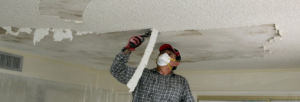
Step 1: Degrease
Degrease the woodwork first with a cleaning agent, always rinse with clean tap water and then dry the surface. Immediately sanding is not good, then you only move the grease.
Step 2: Sanding
By sanding, you roughen up the old paint layer, so that the new paint can adhere well. If you start with sandpaper with a coarse grain (for example P120), to smooth out unevenness, then build up to a finer grit and always skip one grotto (from P120 to P180 and then to P240). If you only sand with coarse paper, you will see scratches in the paint layer after painting.
Step 3: Cleaning
Brush or wipe the dust well after sanding.
Step 4: Filling
Outside you can better not fill, inside it can. Small hairline cracks can best be eliminated with acrylate sealant.
Step 5: Grounds
If the wood had already been painted, then a primer is not necessary. If you are going to use grounds and topcoats, use a coordinated system (eg Sigma S2U Primer and Sigma S2U Gloss). Always stir the paint well. Dip the clean brush hairs for 1/3 in the paint. Let the paint draw well in the brush. Then baptizes you only put the tip in the paint and paint it.
Step 6: Finish
When the primer is well dry sand it again lightly with a fine abrasive grain (for example P240) and cleans it. Then start at the top with lacquers and work down. Divide the paint well and iron in one direction. A minimum of two layers of paint as required for exterior painting.
Step 7: Cleaning the brush
Are you painting on the next day? Then put your brush in water. In this way, he stays good for one day and is ready for use again after the water has been drained and dried.
To find the best exterior painter in cities of Charlotte, Raleigh, Greensboro, Wilmington and Fayetteville NC, fill in the no-obligation form to get a free quotation.

Telephone No.(704) 937 1398


